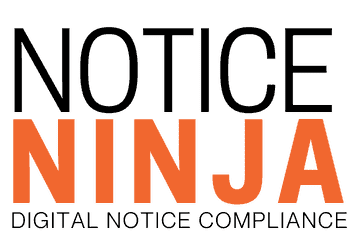Yes, NOTICENINJA is corporate tax notice compliance software that automates key workflows including notice assignments. The platform employs a rule-based system that can manage multiple level rules and ensure notices are directed to the appropriate stakeholder. As a result, you’ll never have to worry about notices being misdirected or slipping between the cracks.

The Ultimate Guide to Filing an Amended 1120 Tax Return
.png?width=1000&name=Amanda%20Reineke%20CEO%20Co-founder%20(16).png)
08 August
Introduction
If you're seeking information on the 1120 amended return, you're in the right place. Here's what you need to know upfront:
- What to file: A corrected Form 1120 must be completed in its entirety with the Amended Return checkbox selected.
- Documents to include: All forms, schedules, and attachments that have undergone changes or that support the amendments.
- Signature and payment: A signed form (Form 8453-C) or use of a Practitioner's PIN, along with appropriate forms to handle any adjustments in payment, refunds, or credits.
Deadlines matter a lot when you're dealing with taxes. Typically, corporate taxpayers must file their annual tax returns (Form 1120) by the 15th day of the fourth month following the close of their fiscal year. Miss that deadline, and you're looking at penalties.
Form 1120 is for corporate taxpayers and covers income from domestic corporations or foreign ones with U.S. offices. Errors, changes, or new information will require you to file an amended return to set things straight.

Understanding the 1120 Amended Return
When to File an Amended 1120 Return
Mistakes happen. Whether it's an oversight or new information, you might need to file an 1120 amended return to correct your corporate tax filing. The IRS allows corrections within specific time frames:
- Three-Year Rule: You have three years from the date you filed the original return to file an amended return.
- Two-Year Rule: Alternatively, you can file within two years from the date you paid the tax, whichever is later.
For example, if you filed your original return on April 15, 2021, you have until April 15, 2024, to file an amended return. If you paid your taxes on June 1, 2021, you could file until June 1, 2023.
How to File an Amended 1120 Return
Filing an 1120 amended return can be done either electronically or on paper.
E-Filing
- Update the Original Return: Revise the original return with the correct information.
- Attach Required Documents: Include any XML documents and supporting explanations.
- Select the Amended Return Checkbox: Ensure the checkbox for "Amended Return" is selected to avoid rejection.
Paper Filing
If you have an approved waiver to file on paper:
- Complete a New Form 1120: Correct the errors and include any changes.
- Mail to the IRS Service Center: Send the completed form to the appropriate IRS address.
XML documents are crucial for e-filing, but not for paper filing.
Key Differences Between Amended and Superseding Returns
Understanding the difference between amended returns and superseding returns can save you from headaches.
Superseding Returns
- Filed Within the Filing Period: Must be filed before the original due date, including extensions.
- Complete Return Required: It's a full return, not just corrections.
- Designation: Must check the "Superseded Return" box in your software.
Amended Returns
- Filed After the Filing Period: Submitted after the original due date, including extensions.
- Subset of Information: Only changes and the main form are needed.
- Business Rules: Different sets of rules apply, especially for Form 1120-F.
In short, superseding returns are like a do-over within the allowed time, while amended returns fix issues discovered later. Understanding these nuances ensures compliance and avoids unnecessary penalties.
Step-by-Step Guide to Filing an Amended 1120 Return
Gathering Necessary Documents
Before you start the process of filing an 1120 amended return, gather all the necessary documents. Having everything in one place makes the process smoother and minimizes errors.
- Original Return: Ensure you have a copy of your original Form 1120. This will serve as the baseline for any changes you need to make.
- Digital or Printed Copy: It's essential to have a digital or printed copy of your original return. If you don't have one, you can obtain it from the IRS here.
- Supporting Documents: Collect all forms, schedules, and attachments that changed or support the changes on the amended Form 1120. This includes any subsidiary returns if they have changed.
- Form 8453-C/S/I: Depending on your situation, you might need a signed signature document (Form 8453-C, 8453-S, or 8453-I) or use a Practitioner’s PIN.
- Payment or Refund Forms: If applicable, gather the appropriate forms to make a payment, request a refund, or request a credit carryover to another year.
Making Corrections on Form 1120
Once you have all your documents ready, it's time to make the necessary corrections on Form 1120. Here’s how to proceed:
- Identify Line Items: Determine which line items on the original return need correction. This could be income, deductions, or credits.
- Corrected Amounts: Enter the corrected amounts for each line item. Make sure to be precise to avoid further errors.
- Explanations: Provide a clear explanation for each change. This should include the line number of each amended item, the corrected amount or treatment of the item, and the reason for each change.
- Form 1120-X: For Form 1120, attach the XML Form 1120-X completed through Part I, line 10 or 11, as applicable, and Part II with the line number of each amended item. For Form 1120-S or 1120-F, attach the XML document, AmendedReturnChanges.
Submitting the Amended Return
After making all necessary corrections, you’re ready to submit your amended return. Here’s how to do it:
- E-file Process: If you opt for e-filing, follow the steps provided by your tax software. Make sure to check the "Amended Return" checkbox and attach all required XML documents and supporting forms.
- Paper Filing: If you prefer to file by paper, print out the corrected Form 1120 and all supporting documents. Mail them to the IRS service center that handles your type of return.
- Signature Documents: Ensure that you include signed Form 8453-C/S/I, as applicable, or use a Practitioner’s PIN for electronic signatures.
- IRS Acceptance: Wait for the IRS to accept your amended return. You can check the status of your amended return using the IRS Where's My Amended Return? tool.
- Refund Status: If you are expecting a refund, keep an eye on its status. Refunds from amended returns can take up to 16 weeks to process.
By following these steps, you can file an 1120 amended return with confidence, ensuring that all corrections are properly documented and submitted. This will help you stay compliant and minimize any potential penalties.
Common Issues and Solutions
Handling Refund Delays
Filing an 1120 amended return can sometimes result in refund delays. Here are some common steps to handle these delays:
- Check Refund Status: Use the IRS Where's My Amended Return? tool to monitor the status of your refund. Amended returns can take up to 16 weeks to process, so patience is key.
- Tentative Refund Procedures: If you need a quicker resolution, consider filing Form 1139, Corporation Application for Tentative Refund. This form allows corporations to apply for a quick refund based on a net operating loss, unused general business credit, or other carrybacks.
- Form 4466: For overpayments of estimated tax, you can file Form 4466, Corporation Application for Quick Refund of Overpayment of Estimated Tax. This form can expedite the refund process if the overpayment meets certain criteria.
Correcting Errors on the Amended Return
Errors on an amended return can lead to complications. Here’s how to correct them:
- Line Number Identification: Clearly identify the line number of each amended item on your Form 1120-X. This helps the IRS understand which parts of the return have been changed.
- Corrected Amounts: Enter the corrected amounts next to the original amounts on Form 1120-X. This side-by-side comparison makes it clear what corrections have been made.
- Supporting Explanations: Attach a statement explaining each correction. Detail the reasons for the changes to avoid any misunderstandings. For example, if you discovered an expense that was not originally reported, explain how and why this was missed.
Ensuring Compliance with IRS Requirements
Staying compliant with IRS requirements is crucial when filing an 1120 amended return. Here are some tips:
- Business Rules: Ensure that all business rules are followed. This includes correctly filling out forms, attaching necessary documents, and following IRS guidelines for amended returns.
- Signature Documents: Make sure all required signatures are present. An unsigned return can result in processing delays or rejection.
- Payment Forms: If additional taxes are owed due to the amendments, include the necessary payment forms. This prevents interest and penalties from accruing.
By addressing these common issues effectively, you can streamline the process of filing an amended return, reduce delays, and stay compliant with IRS regulations.
Conclusion
Filing an 1120 amended return can be a complex process, but it doesn't have to be overwhelming. With the right tools and guidance, you can navigate this task smoothly. This is where NOTICENINJA comes into play.
NOTICENINJA is designed to simplify and automate the entire process of managing tax notices and amended returns. Our platform ensures that all steps—from gathering necessary documents to submitting the amended return—are handled efficiently and accurately.
Automated Processes
One of the standout features of NOTICENINJA is its ability to automate repetitive tasks. This means you spend less time on data entry and more time focusing on strategic decisions. Our system can automatically populate forms, track deadlines, and even generate the necessary supporting documents. This reduces the likelihood of errors and speeds up the filing process.
Compliance Management
Staying compliant with IRS regulations is crucial. NoticeNinja helps you manage compliance by keeping you updated on the latest IRS guidelines and ensuring that all forms are filled out correctly. Our software also checks for missing signatures and incomplete information, which helps avoid processing delays and potential penalties.
Timely Handling
Timeliness is key when dealing with tax returns and amendments. Delays can result in interest accruals and penalties. NOTICENINJA helps you stay on top of deadlines by sending reminders and alerts for important dates. Whether you're filing electronically or by paper, our platform ensures that your amended return is submitted on time, every time.
By leveraging NOTICENINJA, you can make the process of filing an 1120 amended return much more manageable. Our automated processes, compliance management features, and timely handling ensure that you can focus on what matters most—growing your business.
Ready to streamline your tax notice compliance? Learn more about mastering tax notices with Notice Ninja.
By using NOTICENINJA, you can transform a daunting task into a straightforward process, ensuring accuracy, compliance, and timeliness.


